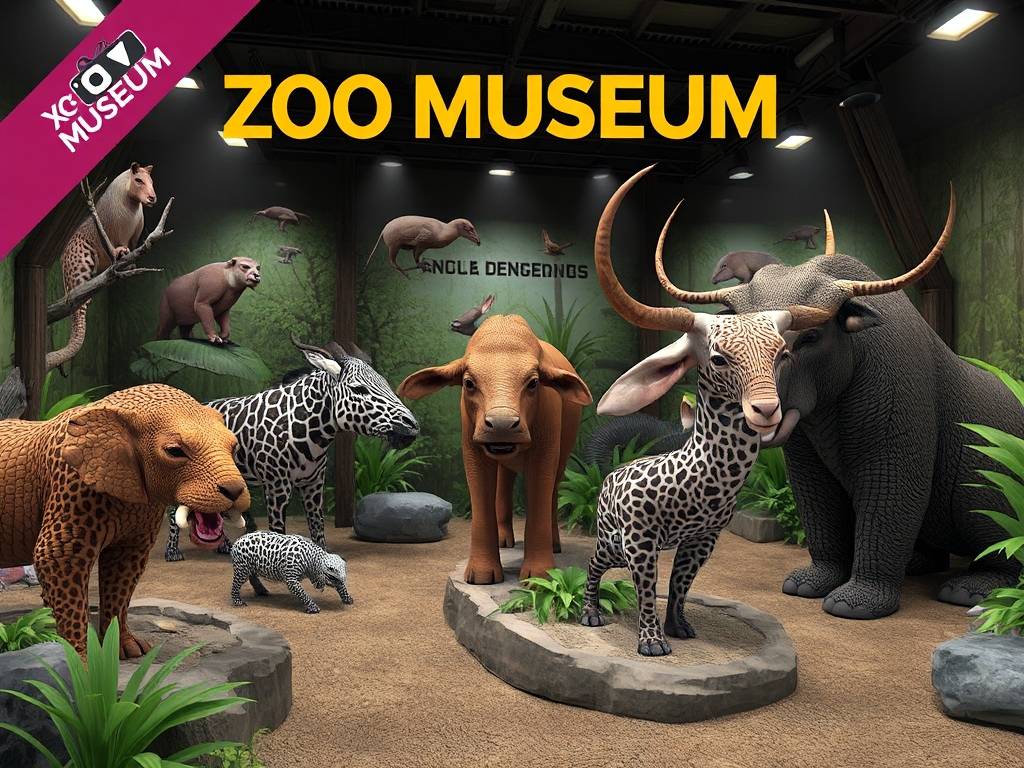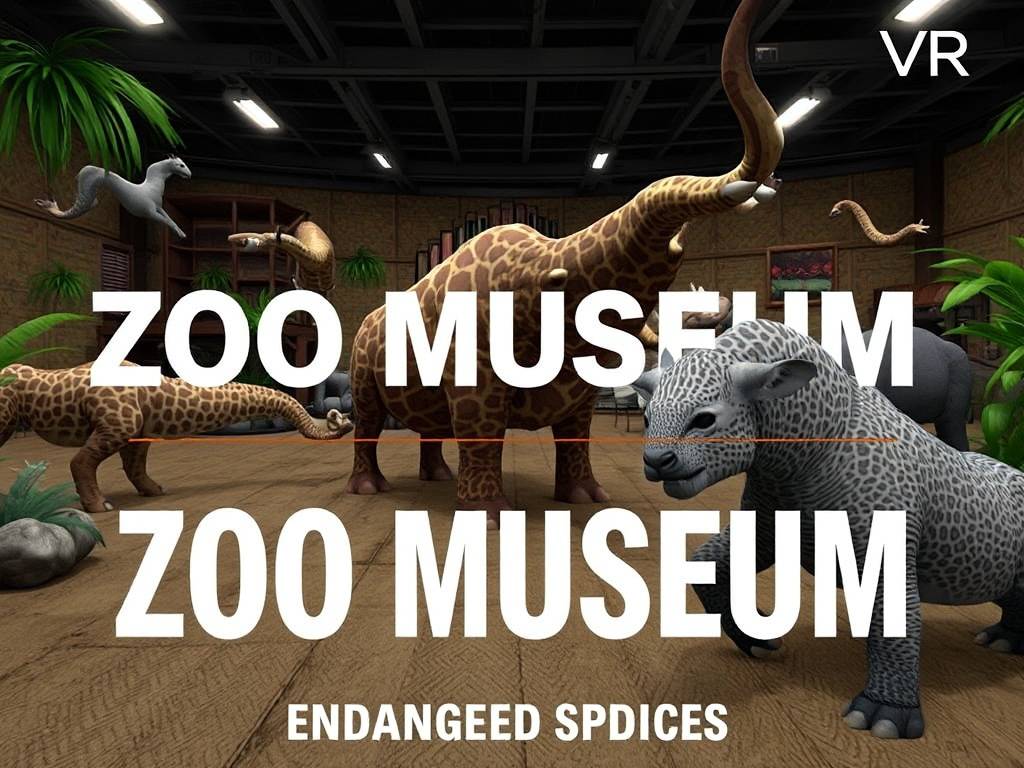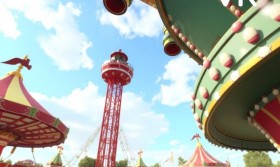Beyond the Glass: How Zoo Museum VR's Endangered Species DLC is Rewilding Our Hearts
Imagine standing on the damp, earthy floor of a Sumatran rainforest. The air is thick with humidity, carrying the scent of blooming orchids and decay. A gentle rustle in the canopy above makes you look up. There, moving with a quiet, powerful grace, is a Sumatran orangutan, her intelligent eyes meeting yours for a fleeting, profound moment. You are close enough to see the texture of her fur, the careful grip of her hand on a vine. But you haven't boarded a plane to Indonesia. You are in your living room, wearing a VR headset, experiencing the groundbreaking Zoo Museum VR's Endangered Species DLC.
This isn't just another virtual reality game. It's a portal, an empathy engine designed to bridge the vast gap between our daily lives and the silent crisis of extinction unfolding across our planet. For too long, our understanding of endangered species conservation has been limited to static placards in zoos, heartbreaking documentaries, or grim statistics about habitat loss. These methods, while valuable, often create a psychological distance. The Zoo Museum VR DLC shatters that distance, offering an immersive wildlife education experience that is as transformative as it is informative.

So, what exactly is this experience? At its core, the Endangered Species DLC is a meticulously crafted digital sanctuary. It expands upon the base Zoo Museum VR app, which already allows users to explore detailed 3D models of animals in a virtual museum. The DLC, however, takes a revolutionary leap. Instead of displaying animals in sterile, museum-style dioramas, it transports you directly into their fragmented natural habitats. You don't just see a Javan rhino; you stand in its misty volcanic forest, hearing the distant call of a gibbon, understanding the complexity of the ecosystem it is struggling to survive in.
This approach is the key to its power. The DLC is built on the principle of experiential learning for wildlife preservation. Cognitive science tells us that we protect what we care about, and we care about what we feel connected to. Reading that "the Amur leopard has fewer than 100 individuals left in the wild" is a sobering fact. But sharing a virtual space with one—watching the dappled sunlight filter through the trees onto its rosette-patterned coat, seeing it move with a predator's silent elegance—transforms that statistic into a personal story. This is the ultimate goal: fostering empathy for threatened animals through direct, visceral experience.
Let's take a deeper dive into the virtual reality animal habitat exploration that forms the heart of this DLC. Each ecosystem is a painstakingly researched digital replica. The Amazon rainforest level isn't just a green backdrop; it's a multi-layered world. You can activate a "canopy explorer" mode to soar up into the treetops, witnessing the vibrant community of birds, insects, and tree-dwelling mammals, highlighting the critical issue of deforestation impact on biodiversity. On the forest floor, you might encounter a family of giant anteaters, with contextual pop-ups explaining how their survival is intrinsically linked to the health of this specific environment.

The DLC features a curated list of some of the world's most vulnerable species. You can witness the elusive vaquita, the world's most endangered marine mammal, gliding through the murky waters of the Gulf of California. You can walk alongside a African forest elephant, understanding its role as a "gardener of the forest" by dispersing seeds. For each animal, the experience doesn't stop at observation. Interactive modules, which we can call interactive DLC for understanding extinction, allow you to engage with the threats they face.
For instance, in the mountain gorilla habitat, you might be tasked with "disarming" a virtual poacher's snare. In the coral reef ecosystem, you can participate in a virtual cleanup, removing plastic debris and observing how the reef begins to recover, a powerful demonstration of marine ecosystem virtual reality education. These are not simplistic mini-games; they are carefully designed interactions that illustrate the real-world challenges and, more importantly, the solutions being implemented by conservationists.
This leads to the most crucial aspect of the Zoo Museum VR: Endangered Species DLC: its role as a tool for raising awareness for critically endangered animals and, more importantly, driving real-world action. The experience is punctuated with stories of hope. After learning about the threats to the black-footed ferret, you are introduced to the successful conservation breeding programs in virtual zoos that brought them back from the very brink of extinction. You can take a virtual tour of these breeding facilities, understanding the science and dedication behind them.
Furthermore, the DLC seamlessly integrates actionable steps. At the end of each habitat tour, a "Get Involved" portal appears. This portal provides direct links to vetted conservation organizations, from global giants like the World Wildlife Fund to smaller, grassroots groups working specifically to protect the species you just encountered. It suggests simple lifestyle changes, explains the importance of sustainable palm oil or responsible tourism, and even offers virtual volunteering opportunities. This direct pipeline from empathy to action is what sets this DLC apart; it's a virtual wildlife sanctuary experience that doesn't let you leave without showing you how to help protect its real-world counterparts.
The potential applications for this technology are vast. It's a powerful educational VR for species conservation tool for schools, allowing children to go on field trips to continents they could never otherwise visit. It's a resource for researchers and NGOs to model potential outcomes of habitat loss and climate change effects in a dynamic, visual way. For the average person, it's a form of ethical eco-tourism through VR, satisfying the desire to see the world's wonders without the carbon footprint or potential disruption to fragile environments.
In conclusion, Zoo Museum VR's Endangered Species DLC is more than an add-on; it's a new paradigm for environmental education and advocacy. It moves us from being passive observers to active participants in the story of life on Earth. By leveraging the immersive power of virtual reality, it doesn't just tell us about the plight of the Sumatran orangutan or the Amur leopard; it makes us feel, in our bones, their beauty, their struggle, and their irreplaceable value. It rewilds our imaginations, reminding us of the breathtaking wonder we stand to lose, and in doing so, it empowers us to become the guardians our planet so desperately needs. The glass of the zoo enclosure has finally vanished. All that remains is the connection, the understanding, and the urgent, hopeful call to preserve what we have now truly seen.
















